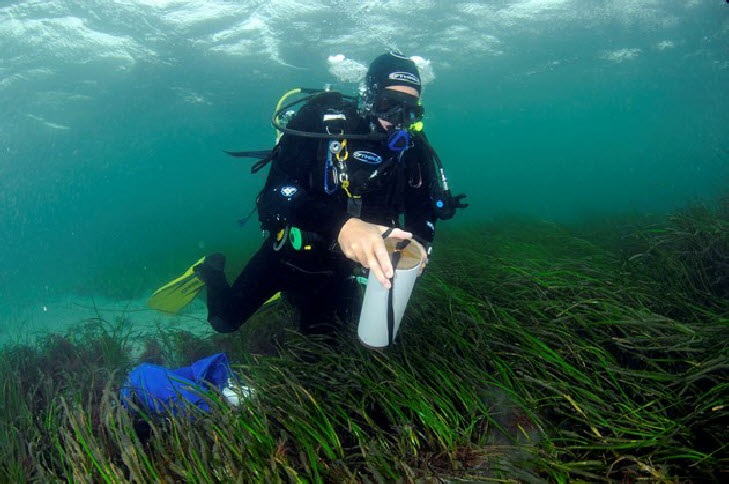A diver collecting a seagrass sample in the Sound of Barra. Photo by Ben James
Scotland’s largest-
1 March 2024

Restoring nature in Scotland’s seas will get a £2 million funding boost it has been announced.
NatureScot detailed a new partnership to restore Scottish seagrass meadows, with
support from SSEN Distribution in what is believed to be the largest-
This new, innovative nature finance initiative coincides with World Seagrass Day today (1 March).
Seagrass is a wonder plant, the only true flowering plant in the sea. The meadows it creates in shallow and intertidal waters are home to a bewildering array of wildlife and are often likened to rainforests because of the thousands of species they provide food and shelter for.
Scottish seas are a special place for marine habitats like seagrass, with our coast stretching 18,000 km and containing 8,000 species or more.
Seagrasses have another great advantage: their leaves and roots take in carbon dioxide and lock it away, making them great natural solutions to help tackle the climate crisis as well as reducing biodiversity loss. They can also improve water quality, reduce contamination in seafood, and act as the first line of defence along coasts by reducing wave energy, protecting people from the increasing risk of flooding and storms.
But seagrasses have been declining globally since the 1930s, with estimates that 7% of seagrass meadows are being lost each year. This exciting initiative will see at least 14ha of seagrass planted in Scottish coastal waters.
Wellbeing economy secretary Màiri McAllan said: “Tackling the twin crises of climate change and biodiversity loss is a global and national endeavour which will require the collective effort of governments, businesses and our whole society to deliver the necessary change.
“This announcement is a great example of the potential for unlocking responsible private finance to support nature restoration and could be transformative for our precious seagrass.”